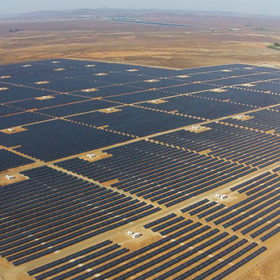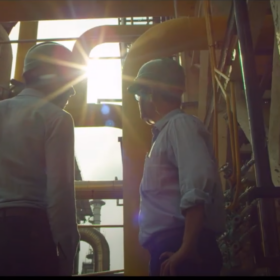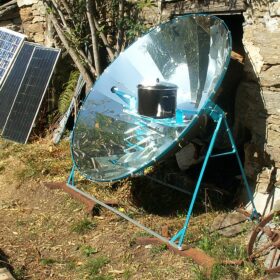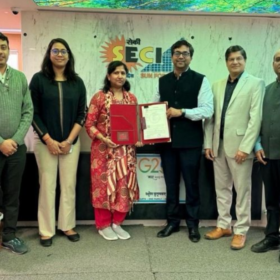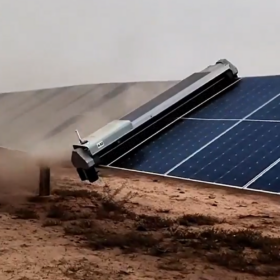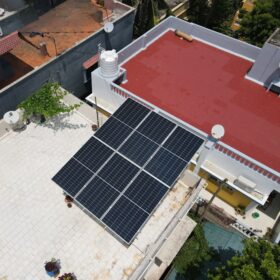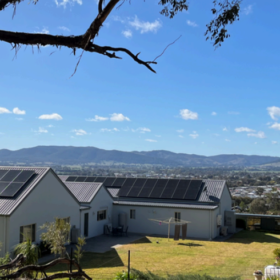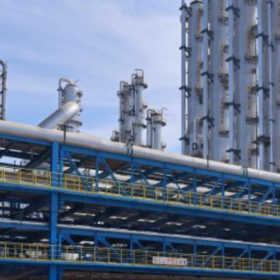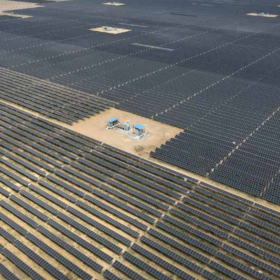Why battery storage is becoming non-negotiable for renewable-rich grids in India
As renewable capacity rises, the question is no longer whether India can generate green power. The real challenge is whether the grid can absorb it smoothly and deliver it reliably when people actually need it. This is where battery energy storage systems (BESS) are increasingly seen not as a luxury but as a core part of grid planning.
Sunsure Energy secures long-term solar PPA with Bisleri International
Sunsure Energy has signed a long-term solar power purchase agreement (PPA) with Bisleri International to supply solar power to Bisleri’s manufacturing facility in Sahibabad, Ghaziabad, Uttar Pradesh. The power will be sourced from Sunsure’s 82.5 MWp solar plant in Erach, Uttar Pradesh.
SWREL wins 240 MW AC solar EPC project in South Africa
Sterling and Wilson Renewable Energy Ltd (SWREL) has received a Letter of Award for the engineering, procurement, and construction of a 240 MW AC solar PV project in South Africa. This is the company’s second international order from South Africa this fiscal, secured within two months.
India could attract $4.1 trillion in green investments by 2047: CEEW
Around 92% of the required investments—about $3.79 trillion—would flow into the energy transition, spanning renewable energy, storage, clean mobility, and green hydrogen.
Efficient solar PV cooking with sand-based thermal energy storage
Scientists in Ghana have developed a device that combines a conventional solar PV-powered steam cooker with sand-based thermal energy storage. The system can achieve a thermal efficiency of 38.9% and has a payback period of 4.5 years.
Waaree Group secures order for 10 MWh battery energy storage system
Waaree Group has secured a 10 MWh battery energy storage system (BESS) order from a major infrastructure development company. The BESS will be deployed in Tamil Nadu.
BC Jindal Group secures PPA with SECI for 150 MW round-the-clock renewable power
B.C. Jindal Group has signed a power purchase agreement (PPA) with state-owned Solar Energy Corp. of India Ltd (SECI) for 150 MW round-the-clock (RTC) renewable power. It was allocated the capacity under SECI’s 1,200 MW RTC tender issued in November last year.
LEAPTING to supply 2,700 G1 cleaning robots for 750 MW solar plant in India
LEAPTING (Huzhou LEAPTING Technology Co., Ltd.) has secured a major contract to manufacture and deliver 2,700 units of its flagship G1 automated cleaning robot for a 750 MW solar power project in India.
India installed record 4.9 GW rooftop solar in 9M 2025, says Mercom
India added a record 4.9 GW of rooftop solar capacity in the first nine months (9M) of calendar year (CY) 2025, with 2.1 GW installed in Q3 alone.
Australia breaks record with 5.2 GW solar installations in 2024: IEA report
An International Energy Agency survey of solar power applications in Australia shows 5.2 GW of installations in 2024 were achieved and the total capacity of solar at 40 GW, includes 26.1 GW of distributed systems and 13.4 GW of centralised installations.


